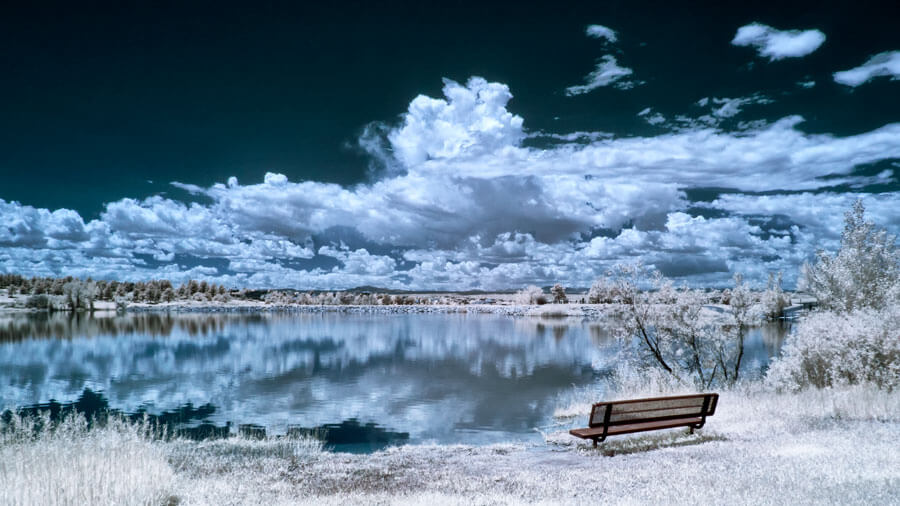Why Digital Infrared?
Today’s Post by Joe Farace
I’m often asked that questions and here’s my answer: Lest you think digital infrared capture is an esoteric photographic pursuit, a recent Google search turned up 8,770,000 hits for “digital IR.” By comparison “Gum Bichromate” produced only 13,300 hits; now that’s esoteric.
The simplest reason for shooting digital infrared photographs is that this technique has the power to transform mundane visual experiences into something unforgettable. Everyday scenes you might walk right by and never think of photographing, take on a dreamy look when seen in infrared.
 Nevertheless, digital IR photography is not for everyone. I have to assume that dark skies, snow-white foliage and increased contrast appeal to your aesthetic sensibilities and what the heck, it’s fun.
Nevertheless, digital IR photography is not for everyone. I have to assume that dark skies, snow-white foliage and increased contrast appeal to your aesthetic sensibilities and what the heck, it’s fun.
Digital IR photography has many advantages over shooting infrared film. Back in the old days of IR film, you needed to use a special film and load and unload it in total darkness. When combined with shooting though almost opaque filters and using an Exposure Index that could best be described as “what the heck,” it was a challenge.
Most images captured with IR film are also grainy while digital infrared image may or may not be depending on the ISO setting chosen. If you find digital noise or film grain, for that matter, objectionable, you can learn how to control it in “ What’s the Big Deal About Digital Noise? ”
Digital IR capture lets you immediately check the exposure after capture and make any necessary changes in your camera settings using the exposure compensation control. One of the biggest advantages of using mirrorless cameras is that you can make that adjustment just by looking at the EVF before you snap the shutter. Exposure for IR film, on the other hand, is mostly experience and guesswork.
To work with IR film you needed special—expensive—filters. That part hasn’t changed but you’ll either have to process the film yourself or find an ever-dwindling pool of specialty labs to do it for you. With digital IR you can make prints at Wal-Mart directly from your memory card.
If you want to save a few bucks when converting your camera to infrared when ordering a conversion from LifePixel , use the coupon code “farace.”




